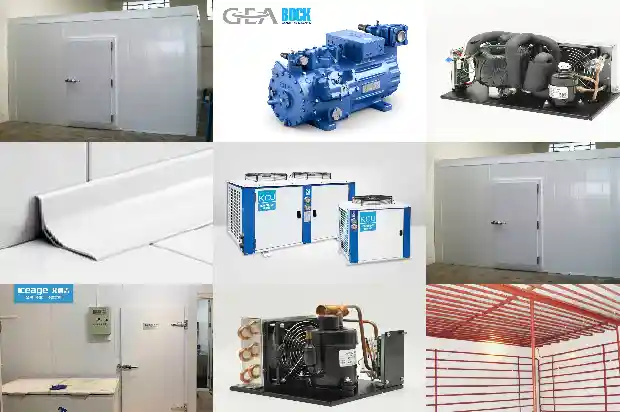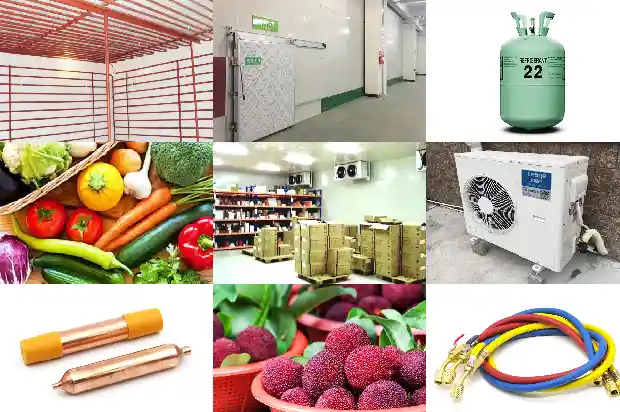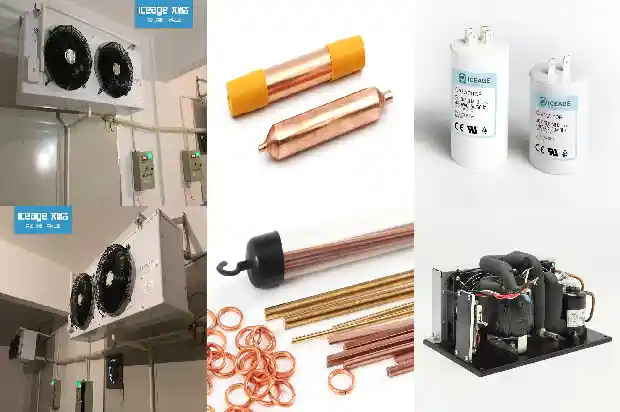Technical quality requirements for refrigerators after repair
2024-09-05
In order to ensure the quality of machine maintenance, during the entire repair process, the quality standards for repairing refrigerators should be determined according to the following points:
(1) The chemical composition and physical and mechanical properties of the selected materials;
(2) Technical quality requirements in structure during assembly;
(3) Tolerances, fits, and surface roughness of parts;
(4) Several technical characteristics that determine the production efficiency of refrigerators.
During the repair process of refrigerators, it mainly includes four working processes: disassembly, repair, assembly, and test run after assembly.
The quality of machine parts determines the quality of the machine itself. The quality of machine assembly in turn determines the superiority or inferiority of machine efficiency. During the entire repair process, inspection work should ensure the quality and timeliness of inspection.
During the disassembly and cleaning process, the main task is to check the degree of damage to parts and determine whether a certain part can be used, repaired, or replaced.
During the repair process of refrigerators, the main task is to check whether the repaired parts reach the required precision and whether the inspection and repair are carried out in accordance with the repair scale and scope. For example, the technical quality of the connecting rod should meet the requirements in the following seven aspects:
(1) There must be no cracks in the connecting rod;
(2) The parallelism deviation of the center lines of the holes in the large and small ends of the connecting rod complies with the regulations;
(3) Whether the ovality and taper of the holes in the large and small ends of the connecting rod exceed the tolerance of the specified grade precision;
(4) The connecting rod bolts and nuts are not allowed to be repaired;
(5) The threaded parts of the connecting rod bolts and nuts must be smooth and free from impacts and damages. The edges of the nuts must not be damaged; the screw must be straight without cracks, residues, flaws, scratches, and impacts, etc.
(6) The connecting rod screws should be easily inserted into the holes without jamming or other phenomena;
(7) The cotter pin of the connecting rod screw should be tightly inserted into the hole. Old cotter pins or iron wires are prohibited from being used instead. Cotter pins with a large gap when inserted into the hole cannot be used either.
Inspection in the assembly stage is also very important.
Defects generated during the assembly process, whether large or small, will affect the future use of the machine. Improperly assembled parts may cause partial non-operation or leakage and premature wear of parts. Therefore, assembly work must be careful and comply with relevant regulations.
(1) The chemical composition and physical and mechanical properties of the selected materials;
(2) Technical quality requirements in structure during assembly;
(3) Tolerances, fits, and surface roughness of parts;
(4) Several technical characteristics that determine the production efficiency of refrigerators.
During the repair process of refrigerators, it mainly includes four working processes: disassembly, repair, assembly, and test run after assembly.
The quality of machine parts determines the quality of the machine itself. The quality of machine assembly in turn determines the superiority or inferiority of machine efficiency. During the entire repair process, inspection work should ensure the quality and timeliness of inspection.
During the disassembly and cleaning process, the main task is to check the degree of damage to parts and determine whether a certain part can be used, repaired, or replaced.

During the repair process of refrigerators, the main task is to check whether the repaired parts reach the required precision and whether the inspection and repair are carried out in accordance with the repair scale and scope. For example, the technical quality of the connecting rod should meet the requirements in the following seven aspects:
(1) There must be no cracks in the connecting rod;
(2) The parallelism deviation of the center lines of the holes in the large and small ends of the connecting rod complies with the regulations;
(3) Whether the ovality and taper of the holes in the large and small ends of the connecting rod exceed the tolerance of the specified grade precision;
(4) The connecting rod bolts and nuts are not allowed to be repaired;
(5) The threaded parts of the connecting rod bolts and nuts must be smooth and free from impacts and damages. The edges of the nuts must not be damaged; the screw must be straight without cracks, residues, flaws, scratches, and impacts, etc.

(6) The connecting rod screws should be easily inserted into the holes without jamming or other phenomena;
(7) The cotter pin of the connecting rod screw should be tightly inserted into the hole. Old cotter pins or iron wires are prohibited from being used instead. Cotter pins with a large gap when inserted into the hole cannot be used either.

Inspection in the assembly stage is also very important.
Defects generated during the assembly process, whether large or small, will affect the future use of the machine. Improperly assembled parts may cause partial non-operation or leakage and premature wear of parts. Therefore, assembly work must be careful and comply with relevant regulations.
Related Articles
- How to Identify the Quality of Refrigeration Equipment Installation Materials?
- Technical Features and Quality Judgment of Stainless Steel Cold Storage Panels
- How to Judge the Quality of Capacitor for Refrigeration Compressor?
- How to distinguish the quality of refrigeration compressor unit of constant temperature and humidity test chamber?
- What Vacuum Requirements Do Cold Storage Equipment Have?
- What Special Requirements are There for the Installation of Tea Cold Storage?
- Requirements and Maintenance for Building Meat Food Cold Storage
- Requirements of Cold Storage Insulation for Maintaining Stable Temperature Inside
- Temperature Requirements for Various Cold Storages
- Return Bend Setup and Installation Technical Requirements
- Types and Temperature Requirements of Seed Cold Storages
- Differences, Requirements and Standards between Pharmaceutical Cold Storage and Conventional Cold Storage
- System Airtightness Experiment Requirements and Steps
- Explosion-Proof Refrigerators' Special Characteristics
- How to Troubleshoot and Repair High - pressure Protection of Air - cooled Units?
- What Misconceptions Should Be Avoided in Low - temperature Refrigeration System Repairs
- Eight Misconceptions in Refrigeration Equipment Repair
- How to Properly Extract Ammonia Refrigerant during Refrigeration Parts Repair
